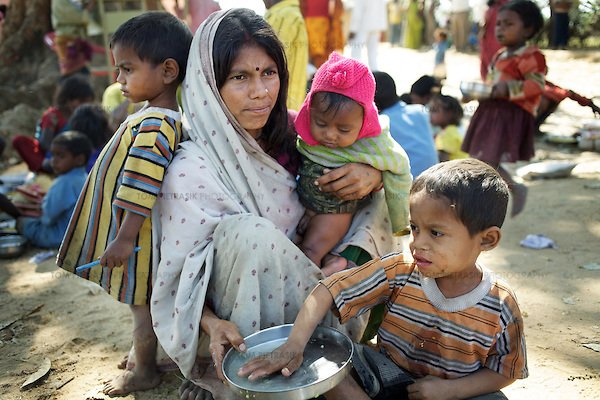India’s ranking in the Global Hunger Index (GHI) 2023, at 111th out of 125 countries, has sparked controversy and a rebuttal from the Indian government. The GHI, an annual report released by Irish NGO Concern Worldwide and German NGO Welt Hunger Hilfe, measures and tracks hunger at global, regional, and national levels. While the ranking suggests a significant challenge related to hunger and undernourishment in India, the Ministry of Women and Child Development has criticized the findings as “flawed” and not reflective of the country’s true position.
In the GHI 2023 report, India is placed at 111th, while its neighboring countries such as Pakistan, Bangladesh, Nepal, and Sri Lanka were ranked at 102nd, 81st, 69th, and 60th, respectively. This ranking is a drop from India’s position in 2022 when it stood at 107th out of 121 countries.
The Indian government’s strong reaction to the GHI ranking stems from its assertion that the index is an “erroneous measure of hunger” and suffers from “serious methodological issues.” According to the ministry’s statement, three of the four indicators used for calculating the GHI are related to child health and cannot be representative of the entire population. The fourth indicator, the Proportion of Undernourished Population (PoU), is based on an opinion poll conducted with a relatively small sample size of 3,000.
The Indian government pointed to its own Poshan Tracker, which tracks child wasting figures consistently below 7.2%. Child wasting is a measure of undernutrition, assessing children’s weight relative to their height. India’s prevalence of undernourishment rate is reported to be 16.6%, and its under-five mortality rate is 3.1%.
The GHI 2023 report particularly highlights India’s child wasting rate, which is recorded at 18.7%, the highest globally. This figure is a clear indicator of acute undernutrition in the country and a matter of grave concern.
India’s government has been implementing a series of initiatives to tackle undernutrition and combat hunger, as the GHI ranking suggests a critical need for these efforts. The Poshan Tracker, which uses the World Health Organization’s growth tables, is utilized by over 1.39 million Anganwadi centers to monitor child health metrics. Anganwadi workers across the country have been trained to carry out these measurements, demonstrating the government’s commitment to addressing child health and nutrition.
Furthermore, India introduced the Pradhan Mantri Garib Kalyan Anna Yojana (PMGKAY) in response to the economic disruptions caused by the COVID-19 pandemic. This initiative has provided over 111.8 million tonnes of food grains in 28 months to nearly 800 million beneficiaries, offering essential support during a period of increased food insecurity.
The Global Hunger Index report highlights the ongoing challenges faced by India in addressing hunger and malnutrition, particularly among children. Despite these challenges, the Indian government continues to prioritize nutrition and food security as part of its broader development agenda.
The GHI 2023 report also underscores the global struggle against hunger. It reveals that despite extensive efforts, worldwide progress in combatting hunger has largely stalled. As the demand for food continues to rise, an alarming number of people are affected by food insecurity. According to UN officials, approximately 783 million people, or one in ten of the world’s population, go to bed hungry every night. Moreover, over 345 million people are facing high levels of food insecurity, a significant increase from early 2021 before the COVID-19 pandemic.
The report’s findings emphasize the urgent need for international efforts to alleviate hunger and malnutrition, particularly in the face of ongoing global challenges. The humanitarian community is grappling with concurrent and long-term crises that require sustained attention and resources.














